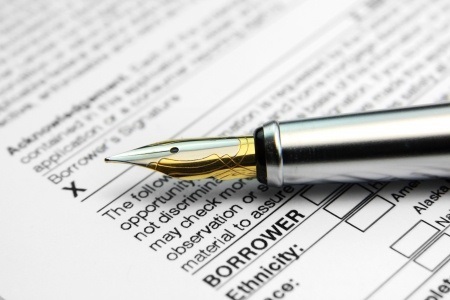Moving From An Apartment To A House? Here’s What You Need To Remember About Your Lease
 The major problem that the vast majority of buyers will run into – especially when purchasing their first home – has to do with a lease agreement that is still active with their apartment complex at the time of the purchase. If you locate the perfect home in February but your lease isn’t over until August, you can’t be expected to wait around.
The major problem that the vast majority of buyers will run into – especially when purchasing their first home – has to do with a lease agreement that is still active with their apartment complex at the time of the purchase. If you locate the perfect home in February but your lease isn’t over until August, you can’t be expected to wait around.
But at the same time, the remainder of that lease agreement could represent thousands of dollars that you’ll be paying to essentially “live” in two different places at the same time.
Luckily, all hope is not lost. There are a variety of steps that you can take to help mitigate your remaining financial risk at your apartment as much as possible.
Breaking Your Lease Early: What You Need to Know
First, look at your existing lease agreement and make sure you understand their early termination policy. This will outline the various acceptable ways, usually dictated in large part by state and other local laws, that you can break a lease early without being forced to pay through the duration of the agreement itself.
Much of this will vary based not only on the state, but also the property manager in question. Your property manager may very well allow for early termination for home buyers – particularly if they’re in an area where they know they can rent the apartment quickly.
This is not always the case, though, which is why you need to begin by reviewing the situation thoroughly so you know what you’re dealing with.
Next, you should review what state laws have to say about your landlord’s duty to find a new tenant in the area of the country that you’re living in. In some states, for example, your landlord MUST make “reasonable efforts” to re-rent your unit as quickly as possible, regardless of the reason you’ve decided to leave.
Many state housing laws require landlords to make every effort to keep their own losses at a minimum – meaning that you may not have to pay much, if anything at all, to break your lease early provided that you give said landlord enough notice.
Why Conversations Matter
Finally, you’ll want to sit down with your landlord face-to-face (if you haven’t already done so) and explain to them exactly what is going on. Landlords are people too and oftentimes they can be more sympathetic than you think.
According to an authority on the matter, the “worst case scenario” for most renters-turned-buyers breaking a lease agreement is often that they’ll need to pay an early termination fee to break their agreement early. This can be as little as one month’s rent to “a few month’s rent” depending on the situation.
At the very least, this is better than being forced to pay every month for the remainder of your term.
In the end, it’s important for you to understand that you should not let anything get in the way of buying the home you’ve always wanted – even if you’re currently living in an apartment with an active lease agreement.
You just need to know as much about the specifics of that agreement as possible so that you can move into your new home while mitigating as much risk as possible for both yourself and your landlord at the same time.
It’s wise to consult with your trusted home financing professional about the implications of your specific situation.

 Several generations ago, lenders required home buyers to have a 20 percent down payment in order to get a mortgage. While there were a few options out there for people who couldn’t save this substantial amount, the reality was that for the majority of people, the 20 percent down was a requirement.
Several generations ago, lenders required home buyers to have a 20 percent down payment in order to get a mortgage. While there were a few options out there for people who couldn’t save this substantial amount, the reality was that for the majority of people, the 20 percent down was a requirement. When you are purchasing a home, your lender may recommend you obtain a mortgage pre-approval before you find the home of your dreams. There are some benefits to being pre-approved before you find a home, but oftentimes, people confuse pre-qualifications with pre-approvals.
When you are purchasing a home, your lender may recommend you obtain a mortgage pre-approval before you find the home of your dreams. There are some benefits to being pre-approved before you find a home, but oftentimes, people confuse pre-qualifications with pre-approvals. Like credit cards or car loans, some mortgages allow borrowers to have co-signers on the loan with them, enhancing their application. However, a co-signer on a mortgage loan doesn’t have the same impact that it might on another loan. Furthermore, it poses serious drawbacks for the co-signer.
Like credit cards or car loans, some mortgages allow borrowers to have co-signers on the loan with them, enhancing their application. However, a co-signer on a mortgage loan doesn’t have the same impact that it might on another loan. Furthermore, it poses serious drawbacks for the co-signer. Last week’s economic releases included reports on Non-Farm Payrolls, ADP payrolls, and the national unemployment rate. Weekly readings on mortgage rates and new jobless claims were also released.
Last week’s economic releases included reports on Non-Farm Payrolls, ADP payrolls, and the national unemployment rate. Weekly readings on mortgage rates and new jobless claims were also released.